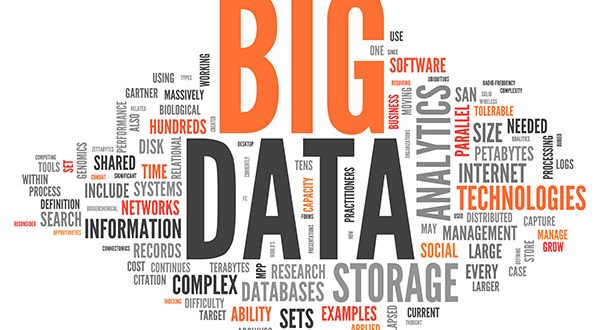Small Businesses and Big Data
 Big data is a term that describes the huge amounts of data that are being created every day from people all over the world using technology. According to IBM, 2.5 quintillion bytes of data are generated daily and 90 percent of the total data in existence was created within the last two years. Using data to improve business processes is nothing new. However, using big data is a whole new ball game. In an article on smallbiztrends.com, Curt Finch examines why small businesses should pay attention to big data. Small businesses have been slow to adopt big data technology. Part of the reason is the cost of using the technology necessary to make sense of it all. But, it makes sense for small business to invest in the technology now instead of waiting until their data reaches unmanageable amounts. Obviously a lot of whether or not your small business decides to invest in big data technology depends on the type of business you’re in, not everyone needs/can use it. Before investing take a look at your business and its objectives and decide if big data is something you’d like to pursue. Big data is allowing small businesses to get back to their marketing roots. Mostly gone are the shops that know what you want before you even walk in the door. By using big data small businesses can tailor their message, inventory, etc. to the customers most likely to engage with them. Big data can tell businesses not only what to sell but when to sell it and how to sell it to best catch their typical customer’s eye. Small businesses already create quite a bit of data through sales receipts, software-as-service applications, Excel spreadsheets and social media. The key is to use that data to make inferences about their customers and their buying habits. There are affordable tools out there to help small businesses do this. Social Mention is a free tool that allows businesses to monitor social media sites for specific subjects. Users receive daily email alerts on online mentions of a subject of their choice, such as their company name, a competitor’s name, a certain market trend or a certain keyword. This allows businesses to “strike while the iron is hot” or basically engage consumers while their brand is on the consumer’s mind. Once big data goals have been set, it’s important to make sure the data and tools you’re using is truly in line with those goals. Don’t make more work for yourself, this is supposed to make finding customer insight a simpler task.
Big data is a term that describes the huge amounts of data that are being created every day from people all over the world using technology. According to IBM, 2.5 quintillion bytes of data are generated daily and 90 percent of the total data in existence was created within the last two years. Using data to improve business processes is nothing new. However, using big data is a whole new ball game. In an article on smallbiztrends.com, Curt Finch examines why small businesses should pay attention to big data. Small businesses have been slow to adopt big data technology. Part of the reason is the cost of using the technology necessary to make sense of it all. But, it makes sense for small business to invest in the technology now instead of waiting until their data reaches unmanageable amounts. Obviously a lot of whether or not your small business decides to invest in big data technology depends on the type of business you’re in, not everyone needs/can use it. Before investing take a look at your business and its objectives and decide if big data is something you’d like to pursue. Big data is allowing small businesses to get back to their marketing roots. Mostly gone are the shops that know what you want before you even walk in the door. By using big data small businesses can tailor their message, inventory, etc. to the customers most likely to engage with them. Big data can tell businesses not only what to sell but when to sell it and how to sell it to best catch their typical customer’s eye. Small businesses already create quite a bit of data through sales receipts, software-as-service applications, Excel spreadsheets and social media. The key is to use that data to make inferences about their customers and their buying habits. There are affordable tools out there to help small businesses do this. Social Mention is a free tool that allows businesses to monitor social media sites for specific subjects. Users receive daily email alerts on online mentions of a subject of their choice, such as their company name, a competitor’s name, a certain market trend or a certain keyword. This allows businesses to “strike while the iron is hot” or basically engage consumers while their brand is on the consumer’s mind. Once big data goals have been set, it’s important to make sure the data and tools you’re using is truly in line with those goals. Don’t make more work for yourself, this is supposed to make finding customer insight a simpler task.

